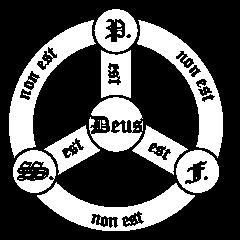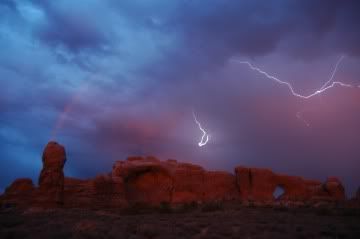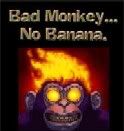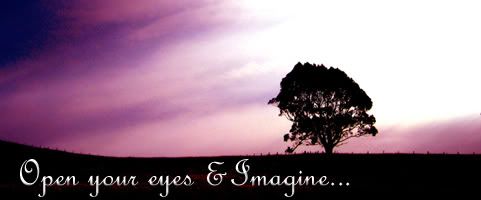|
|
Tolkien
Jun 15, 2005 19:00:05 GMT -5
Post by vilya on Jun 15, 2005 19:00:05 GMT -5
In quick reply to the identity of Bombadil...
After numerous discussions and a bit of research on the subject, my opinion is that he is a "nature spirit."
Illuvatar himself is refuted by Tolkien in "The Letters of JRR Tolkien" in which he states basically that making tom out to be Illuvatar is going way, way too far (which could cast doubt on his being one of the Valar too). He also says something like Bombadil is more of an idea of utter peace and tranquility that he cannot explain with accuracy.
Tom was also used as an extra adventure between the Shire and Bree, and was a name for a doll that his daughter Priscilla had (as mentioned in one of his autobiographies).
I thought that Tom was likely a Maiar for a while, until the point was made that the Maiar were certainly corruptable by the ring.
Tom didn't care for power and glory. He just wanted to chill in his sweet forest pad and pick lilies. In the letters, Tolkien basically says Tom and his country are symbols of what would be lost if Sauron reclaimed the ring, even Tom's peaceful carefree existence in that far corner of the world would be destroyed.
Therefore, when Tom put on the ring and it did nothing, that could be explained by him having absolutely no desire to claim it for his own. No desire for power whatsoever and no ability to be corrupted by it.
Gandalf claims that Tom doesn't have power over the ring, but that it had no power over him. He states Tom would likely forget about the ring or even throw it away if it was given to him.
|
|
|
|
Tolkien
Jun 16, 2005 13:04:16 GMT -5
Post by dinadan on Jun 16, 2005 13:04:16 GMT -5
In quick reply to the identity of Bombadil... After numerous discussions and a bit of research on the subject, my opinion is that he is a "nature spirit." Illuvatar himself is refuted by Tolkien in "The Letters of JRR Tolkien" in which he states basically that making tom out to be Illuvatar is going way, way too far (which could cast doubt on his being one of the Valar too). He also says something like Bombadil is more of an idea of utter peace and tranquility that he cannot explain with accuracy. Tom was also used as an extra adventure between the Shire and Bree, and was a name for a doll that his daughter Priscilla had (as mentioned in one of his autobiographies). I thought that Tom was likely a Maiar for a while, until the point was made that the Maiar were certainly corruptable by the ring. Tom didn't care for power and glory. He just wanted to chill in his sweet forest pad and pick lilies. In the letters, Tolkien basically says Tom and his country are symbols of what would be lost if Sauron reclaimed the ring, even Tom's peaceful carefree existence in that far corner of the world would be destroyed. Therefore, when Tom put on the ring and it did nothing, that could be explained by him having absolutely no desire to claim it for his own. No desire for power whatsoever and no ability to be corrupted by it. Gandalf claims that Tom doesn't have power over the ring, but that it had no power over him. He states Tom would likely forget about the ring or even throw it away if it was given to him. That's pretty consistent with what I was saying about Tom--he's just supposed to be this unexplainable thing in the mythology. |
|
|
|
Tolkien
Sept 25, 2006 20:46:40 GMT -5
Post by Tegid on Sept 25, 2006 20:46:40 GMT -5
Although Tolkien never finished any one version of his tale of the Children of Hurin, there is a lot of detail in the several versions that appear scattered throughout The History of Middle Earth, enough that the reader can glean a fairly complete story. Son Christopher is not satisfied to let that be the final state of things, though, and he has edited a stand-alone version of the complete story, to be released in the spring of next year. It will be graced with artwork by Alan Lee. A press release follows. Now if only Tolkien's translation of Beowulf would see the light of day ... ******* J.R.R. TOLKIEN'S THE CHILDREN OF HÚRIN TO BE PUBLISHED IN 2007 Houghton Mifflin has acquired U.S. rights to publish the first complete book by J.R.R. Tolkien since the posthumous Silmarillion in 1977. HarperCollins UK acquired the project from The Tolkien Estate in a world-rights deal. Presented for the first time as a fully continuous and stand-alone story, the epic tale of The Children of Húrin will reunite fans of The Hobbit and The Lord of the Rings with elves and men, dragons and dwarves, and the rich landscape and characters unique to Tolkien. The Children of Húrin, begun in 1918, was one of three "Great Tales" J.R.R. Tolkien worked on throughout his life, though he never realized his ambition to see it published. Though familiar to many fans from extracts and references within other Tolkien books, it has long been assumed that the story would forever remain an "unfinished tale." Now reconstructed by Christopher Tolkien, painstakingly editing together the complete work from his father’s many drafts, this book is the culmination of a tireless thirty-year endeavor by him to bring J.R.R. Tolkien’s vast body of unpublished work to a wide audience. Christopher Tolkien said: "It has seemed to me for a long time that there was a good case for presenting my father’s long version of the legend of The Children of Húrin as an independent work, between its own covers, with a minimum of editorial presence, and above all in continuous narrative without gaps or interruptions, if this could be done without distortion or invention, despite the unfinished state in which he left some parts of it." Having drawn the distinctive maps for the original The Lord of the Rings more than fifty years ago, Christopher has also created a detailed new map for this book. In addition, it will include a jacket and color paintings by Alan Lee, illustrator of The Hobbit and The Lord of the Rings Centenary Edition and Oscar®-winning designer of the film trilogy. The Lord of the Rings was already acclaimed worldwide as the most popular book of the twentieth century before the blockbuster films in 2001 through 2003 broke new ground and inspired millions more to read J.R.R. Tolkien’s books — an additional 50 million copies were sold, leaving new fans wanting more. The Children of Húrin will be published in the United States by Houghton Mifflin in April 2007, on the same day as HarperCollins' international editions. Victoria Barnsley, CEO and Publisher of HarperCollins Publishers UK, said: "This epic story of adventure, tragedy, fellowship, and heroism stands as one of the finest expressions of J.R.R. Tolkien's skills as a storyteller. With a narrative as dramatic and powerful as anything contained within The Lord of the Rings, it can now be read and enjoyed as Tolkien originally intended, and will doubtless be a revelation for millions of fans around the world." Janet Silver, Vice President and Publisher of Houghton Mifflin, said, "As J.R.R. Tolkien's original American publisher, dating back to The Hobbit, we are extremely proud to be bringing this project to Tolkien's devoted readership in the United States. Christopher Tolkien has done a great service in realizing his father's vision for The Children of Húrin." |
|
|
|
Tolkien
Sept 26, 2006 7:42:26 GMT -5
Post by Dred on Sept 26, 2006 7:42:26 GMT -5
I saw this when it was announced not long ago and wasn't too surprised. I haven't decided yet if I'll go buy it but I'm considering it. How about the rest of you?
|
|
|
|
Tolkien
Sept 26, 2006 9:42:35 GMT -5
Post by Tegid on Sept 26, 2006 9:42:35 GMT -5
I would want to see how much more it adds to the story beyond what is contained in The History of Middle Earth. I personally don't think it will have that much to say beyond what is already there. It's just a matter of whether I would want to have it all (or rather, a selected 'best part of each version') gathered together in one place. Maybe, but probably not. Then again, the artwork might help justify springing for it.
As I mentioned, what I'd really, really like to see would be Tolkien's partial verse and complete prose translations of Beowulf. Michael Drout, editor of an outstanding edition of Tolkien's Beowulf and the Critics, discovered Tolkien's translation in 1996 and was working to get a critical edition ready for publication by 2005, but some time in 2004 or early 2005, the Tolkien Estate yanked permission, and nobody outside that inner loop seems to know why. To me, that's a great loss for the rest of us, not to have what would likely be one of the best translations ever made.
|
|
|
|
Tolkien
Sept 27, 2006 13:20:22 GMT -5
Post by Dred on Sept 27, 2006 13:20:22 GMT -5
I agree with you. The artwork might be the real deal involved here. I've gotten most everything I want of the story from the History series but the artwork...there's another deal.
You're right about his translation of Beowulf. I would love to read that. It's an incredible story already but to have his translation would just add to it. I hope the family, most likely Christopher, can get their act together and get it out for publication.
|
|
|
|
Tolkien
Dec 29, 2006 0:07:44 GMT -5
Post by hoodedwarrior on Dec 29, 2006 0:07:44 GMT -5
Ahhhhh. I love Lord of the Rings!! And the Hobbit! I like JRRT's dry sense of humour in the relating of the tales. And the complexity of the world he created.
You all on here seem well-versed in all his works (unlike me, who always misses things) , so I'll pose this question to you. Does anyone have any more information on Barrow-Wights?? Like where they came from or any stories involving them furthur?? They seem quite ambiguous, and there's not much on them in the appendixes, which is unusual for Tolkien.
|
|
|
|
Tolkien
Dec 29, 2006 8:44:39 GMT -5
Post by Dred on Dec 29, 2006 8:44:39 GMT -5
I believe they are described as being the spirits of the those who had died in the kin strife that took place after the realm was divided into three separate kingdoms. That would be the north kingdom originally. I'll have to go back and reread the books again to see what I can find but I believe the wights are mentioned in LOTR and not in any of the other books.
I have to admit that once you've read the books each year for the last 20 or so years, you do get to know them relatively well but there is always more to learn.
|
|
|
|
Tolkien
Dec 30, 2006 23:23:05 GMT -5
Post by hoodedwarrior on Dec 30, 2006 23:23:05 GMT -5
Ah. If only I had been around twenty years to read Lotr each year for twenty years. lol. But I haven't, I ahven't that many years to my name, and I'm a new Tolkien reader (besides the Hobbit) . Thanks for the info!
|
|
|
|
Tolkien
Dec 31, 2006 0:07:58 GMT -5
Post by Tegid on Dec 31, 2006 0:07:58 GMT -5
In the rough drafts given in The Return of the Shadow (Vol. 6 of The History of Middle Earth), Tolkien at first imagined the barrow-wights and the Black Riders as being related, and he thought perhaps he would have the Black Riders be mounted barrow-wights. Eventually, he made the barrow-wights to be evil spirits from the far-north kingdom of Angmar (ruled by the witch-king who would later become chief of the Nazgul). They came and inhabited the burial mounds of the princes of splintered Arnor after it fell, and could animate the bodies there. |
|
|
|
Tolkien
Oct 30, 2007 23:03:55 GMT -5
Post by Tegid on Oct 30, 2007 23:03:55 GMT -5
In case you are one of the dedicated History of Middle Earth readers and you bemoaned the fact that the development of The Hobbit was not included, good news! Relief has arrived in the form of a two-volume History of The Hobbit. It is compiled by John Rateliff (rather than by Christopher Tolkien), who for many years had employment that placed him among the Tolkien manuscripts at Marquette University.
From Amazon's blurb:
"The definitive examination of how Tolkien came to write his original masterpiece, including the complete unpublished draft and little-known illustrations and unpublished maps ...
"First published in 1937, The Hobbit is a story that 'grew in the telling,' and many characters and events in the published book are completely different from what Tolkien first wrote to read aloud to his young sons as part of their 'fireside reads.' For the first time, The History of the Hobbit reproduces the original version of one of literature's most famous stories, and includes many little-known illustrations and previously unpublished maps for The Hobbit created by Tolkien himself. Also featured are extensive annotations and commentaries on the date of composition, how Tolkien's professional and early mythological writings influenced the story, the imaginary geography he created, and how he came to revise the book in the years after publication to accommodate events in The Lord of the Rings."
|
|
|
|
Tolkien
Nov 1, 2007 12:43:37 GMT -5
Post by Dred on Nov 1, 2007 12:43:37 GMT -5
Ohhhh. That's going to be awesome. I'll have to get it. It's a must read for me.
|
|
reguba
Student
 All hail, Bran ap Hud! King Raven!
All hail, Bran ap Hud! King Raven!
Posts: 33
|
Tolkien
Dec 13, 2007 17:27:16 GMT -5
Post by reguba on Dec 13, 2007 17:27:16 GMT -5
Hello, I'm a new comer here and I've read LOTR more times then I think is healthy to imagine (say, addictively  ) and with the help of an insane memory for things I like (which is why I can't pass math easily) It seems to me that I remember from FOTR that Gandalf said that, in regards to Sauron being driven from Dol Goldur, that Sauron new of the attack already and withdrew as a feint of the real attack that would be the War of the Rings. Also, I'd say that Iluvatar is a translation of God set in a mythical setting. The Valar and Maiar are his angels, not gods, though the men sometimes called them that. Due to the fact that Christians aren't particularily liked much I think he did the right thing to interpret (I probably spelled that wrong) him in a different light. I remember reading (I think in a biography of Tolkien) that he told Lewis that "God is present in my stories. He isn't shown, but he is there." And, on a different comment, is "the New Shadow" even canon? I checked on wikipedia and it says that it was a story abandoned by Tolkien shortly after composition. But, these are just my opinions, and it's by no way definitive. Btw, The Children of Hurin rocks!  |
|
|
|
Tolkien
Dec 13, 2007 21:04:07 GMT -5
Post by Tegid on Dec 13, 2007 21:04:07 GMT -5
Welcome here, reguba! Expand all you want on any of these comments; we'd like to hear your views.
"The New Shadow" is not considered Tolkien canon. He picked it up at least three times between sometime in the 1950s and 1968 and extended it a bit further each time, but he never got anywhere with it, to speak of, before he abandoned it again as "not worth doing." With only the race of men around in the Fourth Age, he couldn't make anything of the tale beyond a mere thriller, and he was dissatisfied with that prospect. He did know, and intend for it to be understood as a fact about life in the Fourth Age, that Men are too soon satiated with good, even bored with it, and that discontent, restlessness, and an outcrop of revolutionary plots were springing up even in the time of Aragorn's reign. He didn't find in the Fourth Age a proper vehicle for exploring this facet of our nature.
|
|
reguba
Student
 All hail, Bran ap Hud! King Raven!
All hail, Bran ap Hud! King Raven!
Posts: 33
|
Tolkien
Dec 13, 2007 22:40:07 GMT -5
Post by reguba on Dec 13, 2007 22:40:07 GMT -5
Aye, it doesn't seem a particularily encouraging prospect. I myself have only read The Silmarillion, LOTR, The Hobbit, Unfinished Tales, and The Children of Hurin. I've mostly limited my knowledge to the canon, but I found Unfinished Tales quite invigorating. I was especially happy when I found The Song of Albion, and from there branched into Hood, but that's a topic for a different board.  |
|












 ) and with the help of an insane memory for things I like (which is why I can't pass math easily) It seems to me that I remember from FOTR that Gandalf said that, in regards to Sauron being driven from Dol Goldur, that Sauron new of the attack already and withdrew as a feint of the real attack that would be the War of the Rings. Also, I'd say that Iluvatar is a translation of God set in a mythical setting. The Valar and Maiar are his angels, not gods, though the men sometimes called them that. Due to the fact that Christians aren't particularily liked much I think he did the right thing to interpret (I probably spelled that wrong) him in a different light. I remember reading (I think in a biography of Tolkien) that he told Lewis that "God is present in my stories. He isn't shown, but he is there." And, on a different comment, is "the New Shadow" even canon? I checked on wikipedia and it says that it was a story abandoned by Tolkien shortly after composition. But, these are just my opinions, and it's by no way definitive. Btw, The Children of Hurin rocks!
) and with the help of an insane memory for things I like (which is why I can't pass math easily) It seems to me that I remember from FOTR that Gandalf said that, in regards to Sauron being driven from Dol Goldur, that Sauron new of the attack already and withdrew as a feint of the real attack that would be the War of the Rings. Also, I'd say that Iluvatar is a translation of God set in a mythical setting. The Valar and Maiar are his angels, not gods, though the men sometimes called them that. Due to the fact that Christians aren't particularily liked much I think he did the right thing to interpret (I probably spelled that wrong) him in a different light. I remember reading (I think in a biography of Tolkien) that he told Lewis that "God is present in my stories. He isn't shown, but he is there." And, on a different comment, is "the New Shadow" even canon? I checked on wikipedia and it says that it was a story abandoned by Tolkien shortly after composition. But, these are just my opinions, and it's by no way definitive. Btw, The Children of Hurin rocks! 